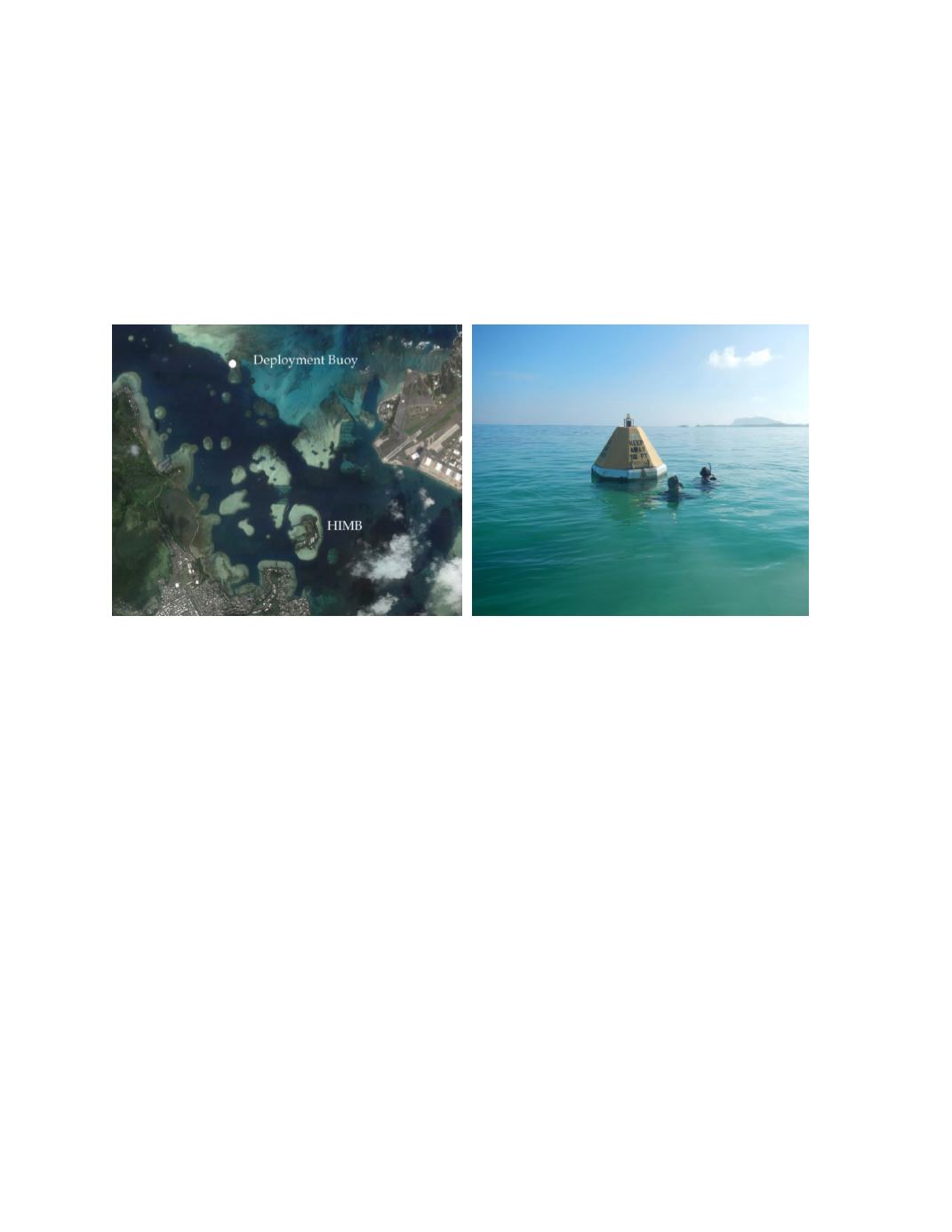

Ref. No. [UMCES] CBL 2015-009
ACT VS15-02
23
Moored Deployment off Coconut Island in Kaneohe Bay, Hawaii
A three month-long moored field test was conducted in Kaneohe Bay from November 15,
2013 to February 10, 2014. The deployment site was located at 21.46° N, 157.80° W in the
back-reef region of the barrier reef offshore of Coconut Island (HIMB) in a depth of 3 meters
(Photo 3). Kaneohe Bay, located on the eastern side of Oahu, Hawii is a complex estuarine
system with a large barrier coral reef, numerous patch reefs, fringing reefs, and several riverine
inputs. Tides in Kaneohe Bay are semi-diurnal with mean tidal amplitude of approximately 68
cm day. The pH instruments were mounted on the Crimp II Buoy (right), about one meter below
the surface.
Photo 3.
HIMB deployment site (left) and sampling at deployment buoy (right).
Time series results of ambient conditions for tidal height, temperature, and salinity are
given in figure 6. Temperature ranged from 22.3 to 26.5 and salinity from 32.8 to 35.2 over the
duration of the field test. The bottom panel displays the maximum difference recorded between
reference thermistors mounted at the same depth across the mooring rack. The average
temperature difference observed across the space of the mooring rack was 0.04 ±0.10
o
C, with a
maximum of 0.65
o
C. As noted above, it is not possible to quantify the exact difference between
the averaged reference temperature and that measured by the test instrument, but differences
resulting from this variation and variation in the chemistry of the water across will be minimized
because the sampling bottle integrates across the mooring space.
The Manta2 sonde operated throughout the entire 88 days of the deployment measuring
at 30 minute intervals, however, the sonde showed a significant shift in measurement response
(pH dropped from a mean of 8.1 to 6.6) starting on January 30
th
, after 67 days of deployment.
Upon retrieval, it was discovered that a tunicate had colonized directly on the pH sensor bulb
causing it to fracture. These last eleven days of data were not used in the direct comparison with
reference samples so the useable number of instrument observations was reduced to 3642, with
75 matched reference timepoints. The time series results of the Manta2 and corresponding
reference pH results are given in figure 7. Ambient pH measured by the Manta2 ranged from
7.85 to 8.39, compared to a range captured by the reference measurements of 7.814 to 8.084.
The bottom panel presents the time series of the difference between Manta2 and reference
measurements for each matched pair (N=75). The average and standard deviation of the
differences were 0.17 ±0.02 with a total range in the differences of 0.12 to 0.20.

















